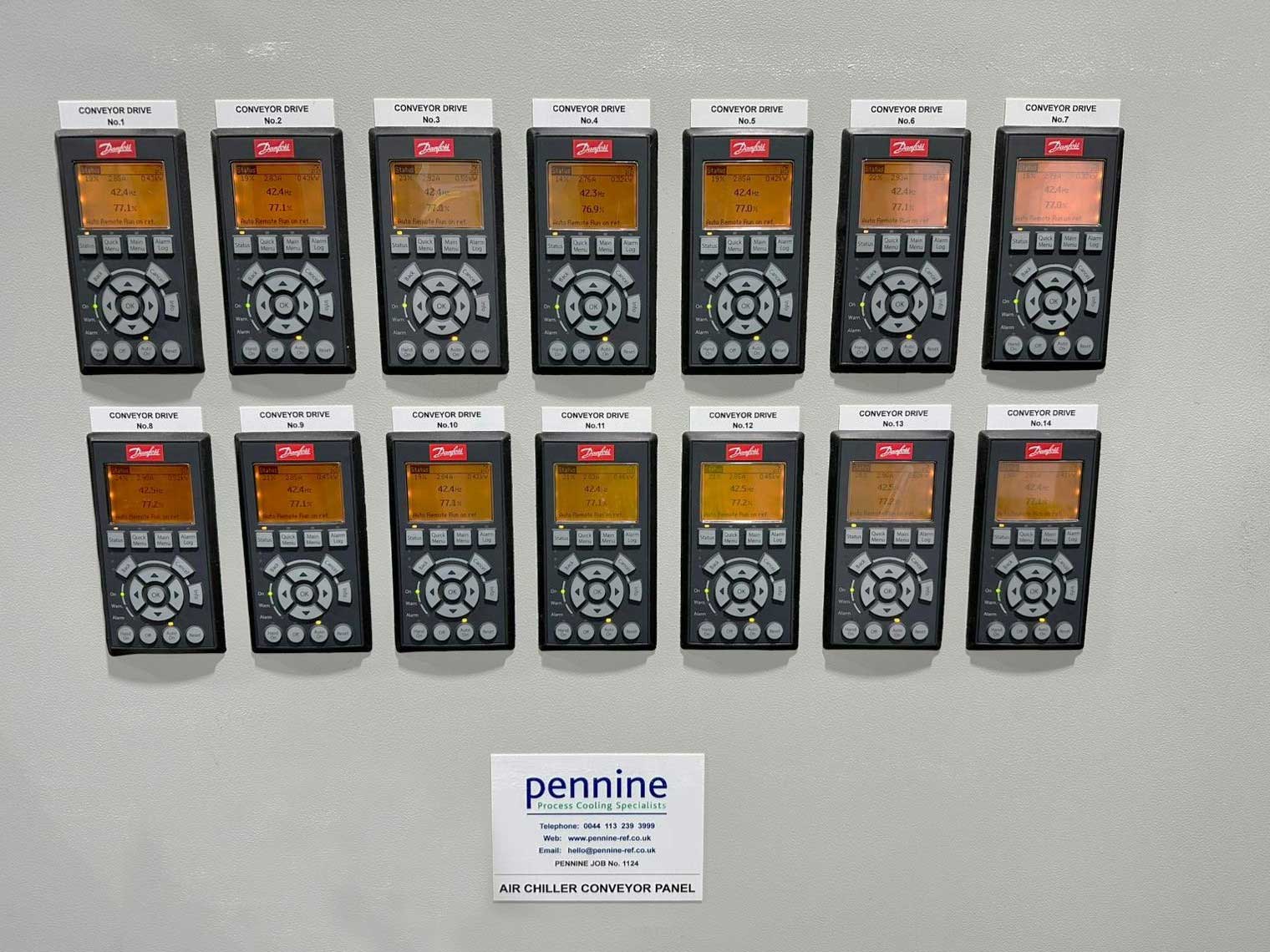Pennine Intelligent Drive Control System
At Pennine, we have extensive knowledge of the operation of multiple drive systems, gained from years of on-site experience. We’ve found that the best way to control a multiple drive system is to control the tension between each drive, and so we’ve developed our own solution: the Pennine Intelligent Drive Control (PIDC).
How it works
Spring-loaded tension unit
A spring-loaded tension unit is usually fitted after each drive. These tension units have linear position sensors fitted to them which measure the compression of the spring and each tensioner can be set to a desired setpoint.
The analogue signal taken from the tensioner sensors is fed into the PLC. The algorithm in the PLC program decides which drives require a speed trim and the amount, maintaining a set tension between each drive.
The speed variations are normally less than 1Hz from one drive to the next and are unnoticeable on the line during production; the overall system line speed is also unaffected.
Take-up unit
For the system to operate efficiently, we take into account both chain stretch due to wear and temperature changes on start-up.
Using a weighted take-up unit – a long tensioner with a weight on the end – to anchor the system, any excess chain in the line is stored or taken from here as required.
The take-up unit is also fitted with a linear position sensor, which is read into the PLC to give an indication of its movement and an alarm will sound when it reaches its maximum or minimum travel.
The PLC not only monitors and records the movement of the tensioners, but also monitors and records drive speeds/drive torques and line speed – all useful when diagnosing problems.
